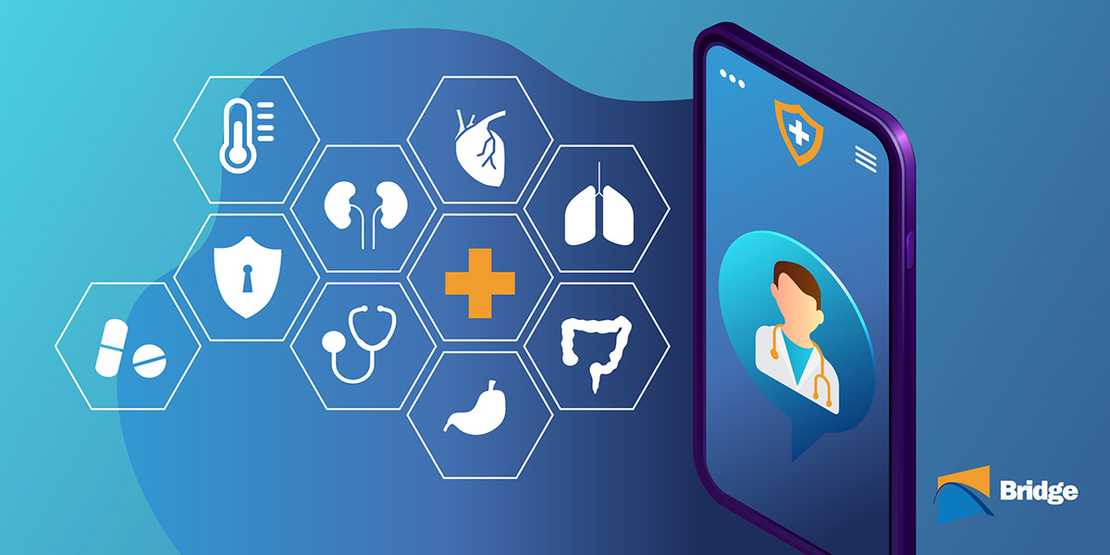Creating a Next Generation Patient Portal
- John Deutsch
- September 10, 2021

The digitalization of the healthcare industry has led to an increase in focus towards the individual patient and giving more personalized care. With that comes a higher expectation on providers. Electronic Health Records (EHR) have been in use for many years in order to keep and maintain clinical data, but for a time it was only the providers who had access to this data. However, since the advent of the Meaningful Use program in 2011, there was a nationwide push towards providing patients with access to their clinical data. This program has been further expanded upon with the Cures Act, wherein patients must have access to their own EHR[¹]. With approximately 90%[²] of US healthcare providers giving patients the ability to view their own records through patient portals, it’s up to the healthcare industry as a whole to further modernize and streamline these portals for the benefit of everyone.
This is where the next generation patient portal comes in. Many organizations still use several third-party tools which creates unnecessary complexity when it comes to communication, maintenance and even cyber security. A next generation patient portal should consolidate and expand upon the services of current portals but also incorporate other patient-facing technologies, all in one place. Accessing numerous platforms for different functions like self-scheduling, messaging, and bill pay can be frustrating and not only lead to poor patient experiences, but outcomes. Next generation patient portals should provide a single entry point to access every aspect of one’s care. This concept is often referred to as a digital front door. With the ubiquity of mobile devices, it’s imperative these portals also be available as a mobile app, allowing faster logins via biometric security and removing the need to remember HIPAA-compliant strong passwords.
Are Current EHR Portals Enough?
In a recent study, more than 80%[³] of hospital and health system executive respondents said they used a patient portal. Often providing minimal features with clunky interfaces and a poor user experience, healthcare executives report frustration amongst clinicians and admin staff and low levels of adoption and usage of these EHR portals with their patients.
Because technology has led the way for major disruptions across numerous sectors, healthcare consumers now expect more than ever before. Healthcare organizations must now prioritize patient-facing technology and ensure that it delivers the accessibility, convenience, transparency, and innovation they have become accustomed to in other industries.
What the Future Holds For Patient Portals
The simplest way a next generation patient portal can remedy the shortcomings experienced by patients and healthcare professionals is by encompassing all aspects of healthcare into one, user-friendly platform. Instead of having separate tools for different tasks, consolidating solutions for patient intake, appointment scheduling, bill pay, telehealth, and remote patient monitoring into a single platform would greatly increase efficacy and usability for both provider and patient alike.
Beyond the convenience of having all healthcare needs in one place, it’s key that providers understand the necessity of going mobile. With 49%[⁴] of all people across all demographics using mobile apps to check their email, a next generation patient portal must provide a mobile app to stay up to date and relevant. Receiving live updates on lab results or medical data facilitates a much more streamlined process and gives patients more immediate control over their care rather than waiting for providers to call.
For physicians, a modern mobile app could allow them to collect biometrics – facilitating them to better diagnose and lead treatment – track medical treatment itself, automatically upload data in real time and even digitally conduct research. An open dialogue between provider and patient is necessary: 75%[⁵] of patients felt that doctors who use mobile technology in their care deliver a faster and more convenient experience.
Advantages of a Next Generation Patient Portal
Research indicates that using an online portal is related to a measurable decrease in future hospital admissions[⁶]. Those with chronic illnesses who require consistent readmittance to hospitals can be taxing on the system, but often, part of the need for these patients to continue returning is a lack of proper engagement, communication with their care team, prescription adherence and information from their providers which can instead be done through a portal. In tandem with this, use of patient portals has positive outcomes for patients on a micro scale as well, including the number of ER visits and even the length of stay during a single visit[⁶].
Patient behavior and expectations have changed – fueled largely in part by the pandemic. A modern, feature-rich and mobile-friendly patient portal is more important now than ever. The ability for patients to manage their care across touchpoints such as making appointments, filling out forms, checking lab results, or paying bills through a single, easy-to-use platform can improve the patient experience and internal workflows, leading to higher levels of engagement and satisfaction while maximizing patient and business outcomes.
- Bonamici, S. (2016). H.R.34 – 114th Congress (2015-2016): 21st Century Cures Act. [online] www.congress.gov. Available at: https://www.congress.gov/bill/114th-congress/house-bill/34
- Lyles, C.R., Nelson, E.C., Frampton, S., Dykes, P.C., Cemballi, A.G. and Sarkar, U. (2020). Using Electronic Health Record Portals to Improve Patient Engagement: Research Priorities and Best Practices. [online] Annals of Internal Medicine. Available at: https://www.acpjournals.org/doi/full/10.7326/M19-0876
- Park, A. (2019). 15 patient engagement IT tools leading 2020 investment. [online] Beckers Hospital Review. Available at: https://www.beckershospitalreview.com/consumerism/15-patient-engagement-it-tools-leading-2020-investment.html
- Campaign Monitor. (2019) Email Trends Report: Mobile vs. Desktop. [online] Campaign Monitor. Available at:
https://www.campaignmonitor.com/resources/guides/email-marketing-trends/ - Singh, C. (2020). The Rising Adoption of mHealth Apps in Healthcare Industry. [online] Appventurez. Available at: https://www.appventurez.com/blog/mobile-applications-in-healthcare/
- Bao, C., Bardhan, I.R., Singh, H., Meyer, B.A. and Kirksey, K. (2020). Patient–Provider Engagement and its Impact on Health Outcomes: A Longitudinal Study of Patient Portal Use. [online] MIS Quarterly. Available at: https://par.nsf.gov/servlets/purl/10202429
